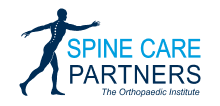Anterior cervical discectomy and fusion (ACDF) is a procedure that reduces or eliminates chronic neck and back pain due to a worn or herniated disc. Patients with chronic neck and back pain, limited mobility, and numbness may benefit from this procedure.
How ACDF Works
ACDF uses bone grafts or arthroplasty to replace the damaged disc. To do this, the surgeon will make a small incision in the neck to reach the spinal column.
Once the incision is made, the surgeon will gently move any tissues to access the spine and remove any damaged discs. A fusion is then performed to stabilize the spine, keep the spine aligned and avoid any friction.
Options for Disc Replacement Include:
- Arthroplasty: The surgeon replaces the disc by inserting an artificial disc between two vertebrae.
- Bone grafts: A bone graft uses bones from somewhere else in the body or from a donor to act as a bridge between two vertebrae.
Once the bone graft or artificial disc is inserted, the surgeon uses a titanium plate and screws to secure the vertebrae.
Conditions That ACDF Can Treat
ACDF is used to treat worn and herniated discs. If you have symptoms of a damaged disc, you may benefit from this procedure.
Symptoms of a damaged disc include:
- Muscle stiffness
- Chronic back pain
- Neck pain
- Headaches
Am I a Good Candidate for ACDF?
Those suffering from damaged discs due to age, injuries, or degenerative conditions such as arthritis may benefit from ACDF. In addition, if non-surgical treatments such as medication and physical therapy do not provide relief, you and your physcian may consider ACDF.
Before having the procedure, diagnostic tests such as MRIs, CT scans, and physical exams are necessary to determine whether you are a good candidate for the procedure.

